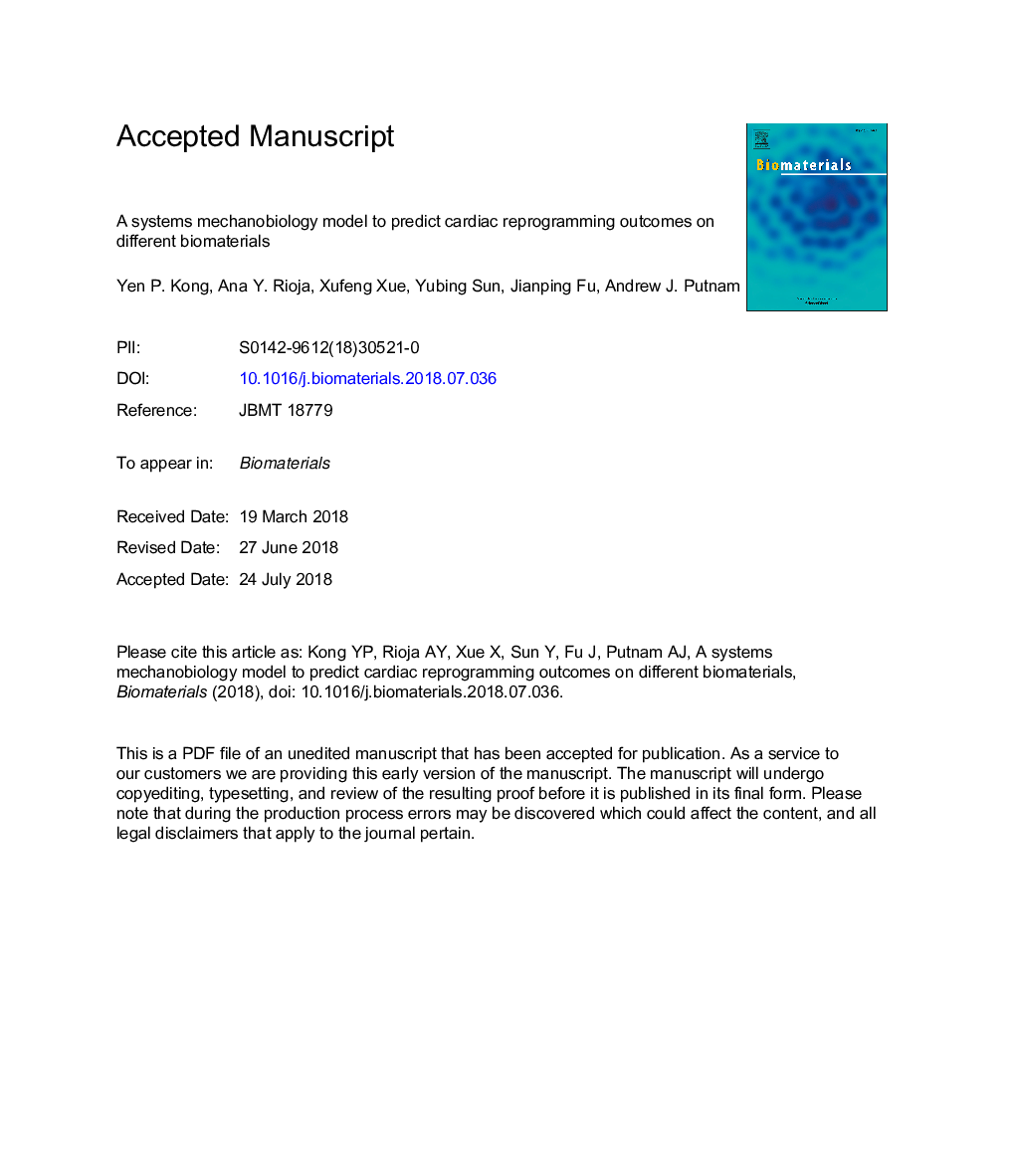| Article ID | Journal | Published Year | Pages | File Type |
|---|---|---|---|---|
| 6484301 | Biomaterials | 2018 | 40 Pages |
Abstract
During normal development, the extracellular matrix (ECM) regulates cell fate mechanically and biochemically. However, the ECM's influence on lineage reprogramming, a process by which a cell's developmental cycle is reversed to attain a progenitor-like cell state followed by subsequent differentiation into a desired cell phenotype, is unknown. Using a material mimetic of the ECM, here we show that ligand identity, ligand density, and substrate modulus modulate indirect cardiac reprogramming efficiency, but were not individually correlated with phenotypic outcomes in a predictive manner. Alternatively, we developed a data-driven model using partial least squares regression to relate short-term cell states, defined by quantitative mechanosensitive responses to different material environments, with long-term changes in phenotype. This model was validated by accurately predicting the reprogramming outcomes on a different material platform. Collectively, these findings suggest a means to rapidly screen candidate biomaterials that support reprogramming with high efficiency, without subjecting cells to the entire reprogramming process.
Related Topics
Physical Sciences and Engineering
Chemical Engineering
Bioengineering
Authors
Yen P. Kong, Ana Y. Rioja, Xufeng Xue, Yubing Sun, Jianping Fu, Andrew J. Putnam,
